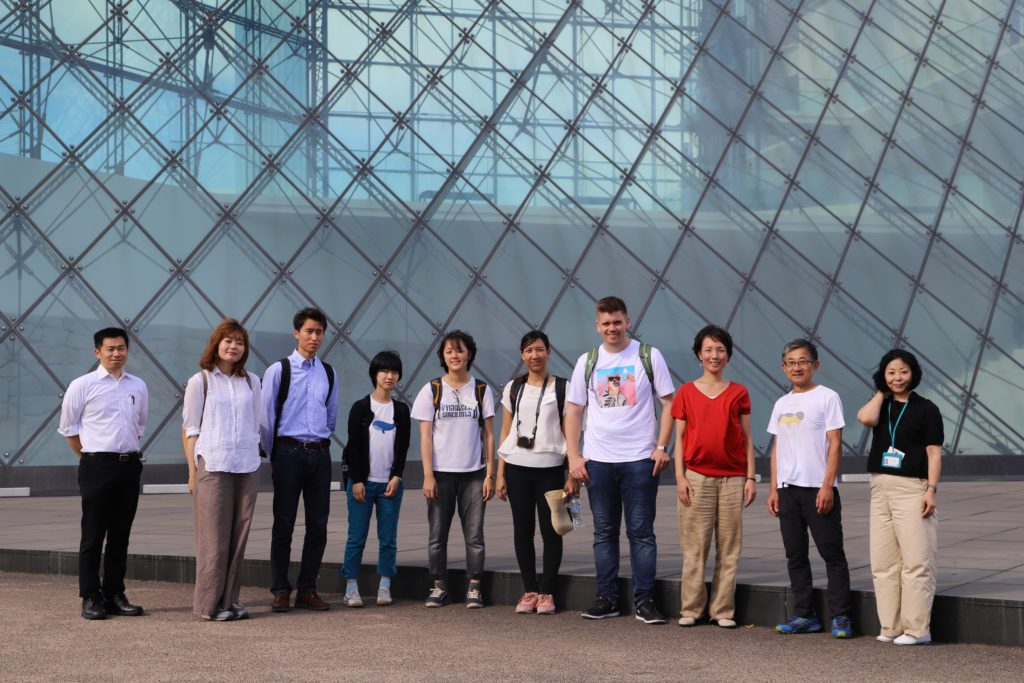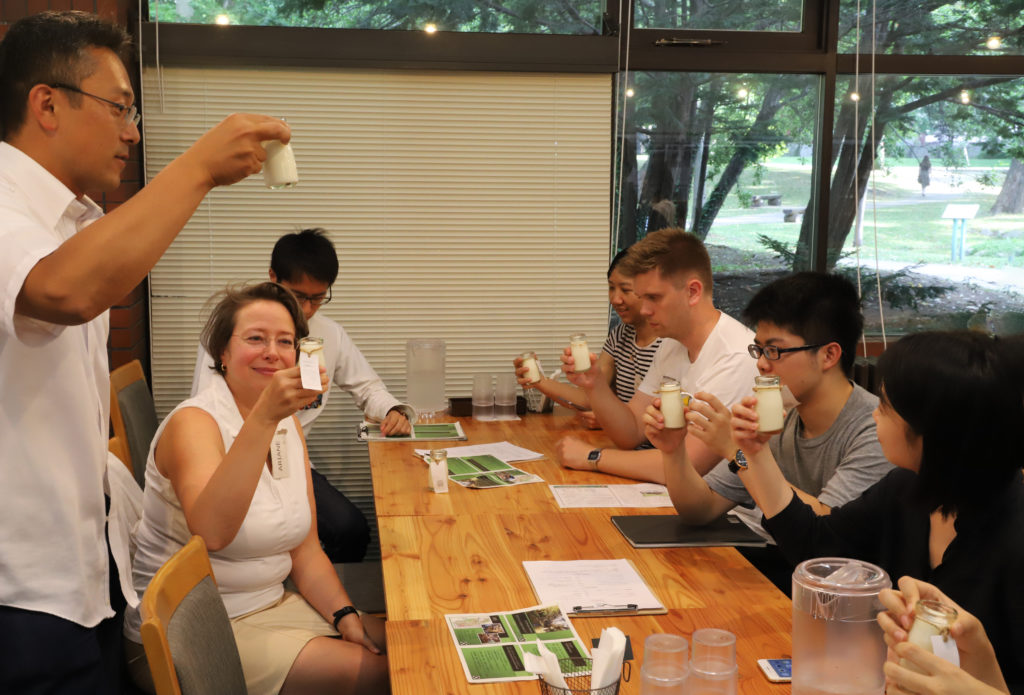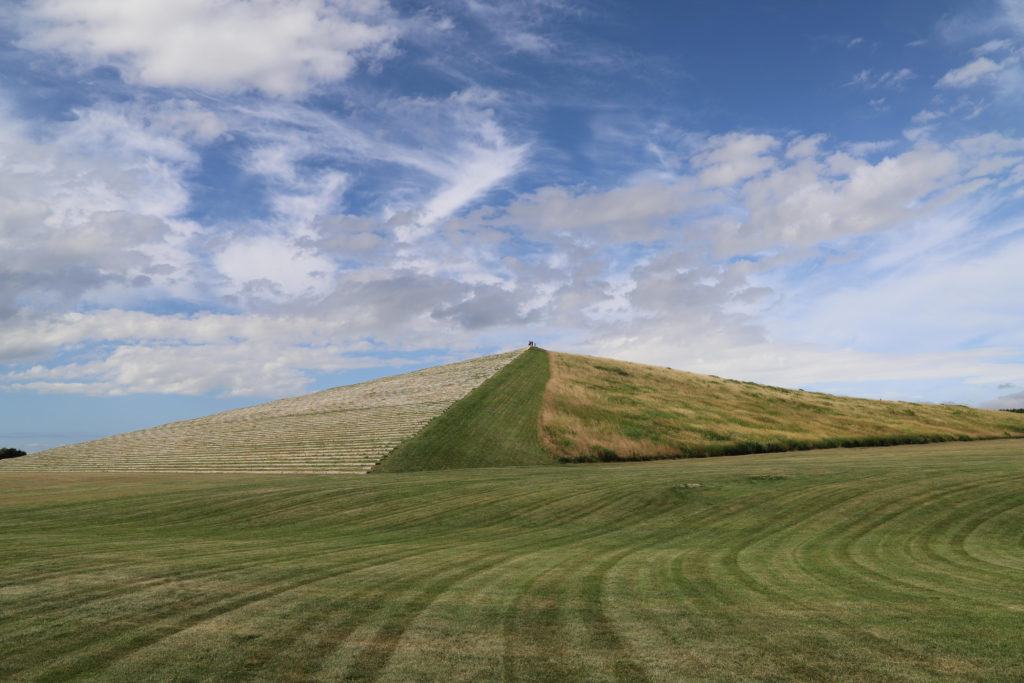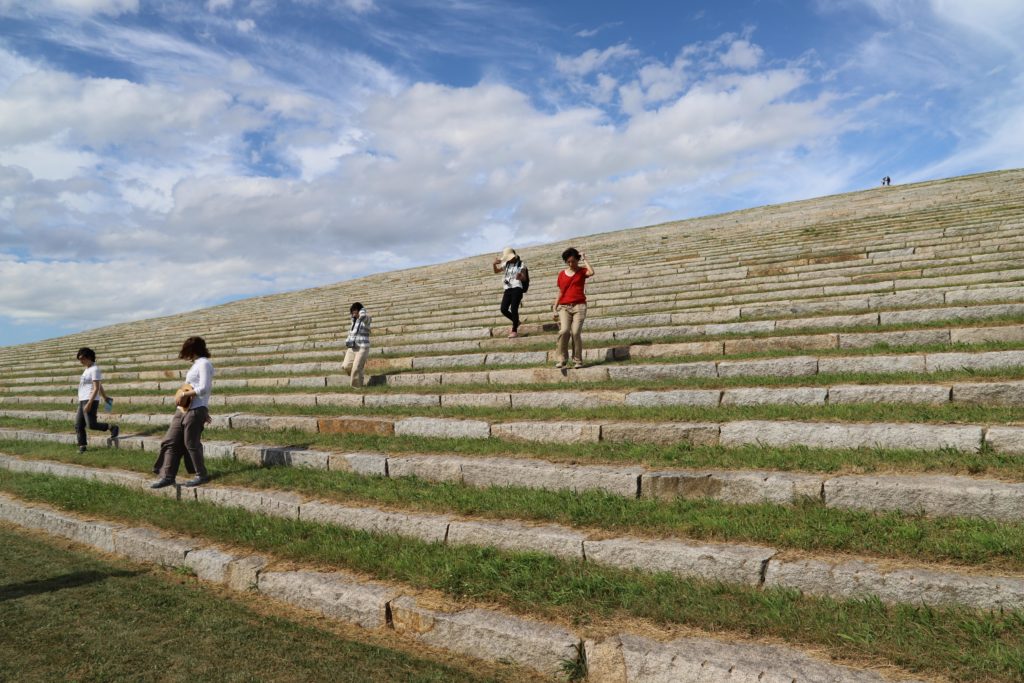HSI Report: Working towards a sustainable campus and a sustainable future
University News | August 21, 2018

Members of the HSI course “Tackling 21st century challenges in universities towards sustainable society” stand in front of the glass pyramid “Hidamari” at Moerenuma Park in Sapporo.
A mixed group of international and Japanese students gathered at Hokkaido University to attend the two-week long course “Tackling 21st century challenges in universities toward sustainable society” offered by the Hokkaido Summer Institute (HSI). Comprising of several classroom lectures and fieldwork excursions throughout Hokkaido University and Sapporo City, the course was a collaborative project between the HSI and the Hokkaido University Sustainable Campus Management Office.
“One of the responsibilities of our office is social outreach, including education and research,” said Specially Appointed Associate Professor of the Sustainable Campus Management Office Maki Ikegami. “Sustainability is a complicated issue, and since there is no sustainability major offered at Hokkaido University, creating this course in the HSI program was something we could do to promote student education and awareness about sustainability issues.”
The course kicked off on July 30th with a field expedition to Moerenuma Park, located in Sapporo’s northeast. Formerly a landfill, the land was reclaimed and redeveloped over a nearly 20-year process under the master vision of famed sculptor Isamu Noguchi. The current area is now uniquely situated as a community park, a retaining marsh for flood runoff, and an interactive sculpture all in one, serving as a prime example of how environmentally friendly and sustainable policies can enrich communities. Students attended an on-site lecture about the history and development of the park, and then were taken on a tour of the grounds and facilities. On top of being shown the various attractions the park provides, students were also shown how the large glass pyramid, which serves as the centerpiece of the park, employs a snow recycling system by preserving snow from Sapporo’s famously long winters to cool the pyramid’s interior.
“I am excited to participate in this course because I like Moerenuma Park, and I have never learned about its history before,” remarked En Kondo, an undergraduate architecture student from Hokkaido University. Vietnamese PhD student Huong Ngo agreed, mentioning that she was looking forward to not only the park, but also participating in a class in Sapporo.
In the second week of the course, students heard from Hokkaido University Assistant Professor Tomohiro Mitani about the history and current state of dairy production at Hokkaido University. Students were then taken to observe the operations at the Hokudai Marche Café & Labo, where meals are created from locally grown Hokkaido food and dairy products are made from the milk of Hokkaido University’s dairy cows. “Until the creation of Hokudai Marche, Hokkaido University researchers were able to study milk development, but didn’t have a way to monitor the market situation when milk reached the customers,” Mitani explained. “However, now we are able to monitor the entire process of milk production, distribution, and sales all within the university.”

Hokkaido University Assistant Professor Tomohiro Mitani (left) and University of Luxembourg Senior Researcher Ariane König (2nd from the left) examine milk from an on-campus café Hokudai Marche with the class.
The course concluded on August 10th. When asked what message she hoped students took away from the experience, Dr. Ikegami said “Sustainability is a very big and very vague concept. Each student comes to this course from their own social background and context, so the information they pick up may be different. However, I would like the students to understand that the questions of sustainability are ultimately questions of how we live as a part of society and nature.”
This course also featured lectures from Hokkaido University Professor Toshihiko Matsuto, Associate Professors Takao Ozasa and Koki Kikuta, and University of Luxembourg Senior Researcher Ariane König.
Written by Tyler Tannert


